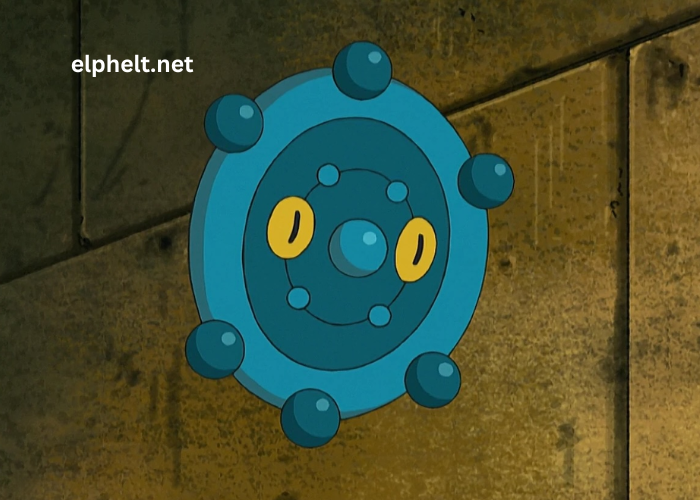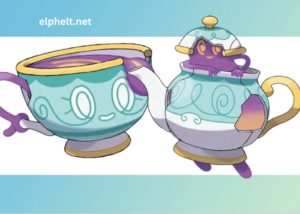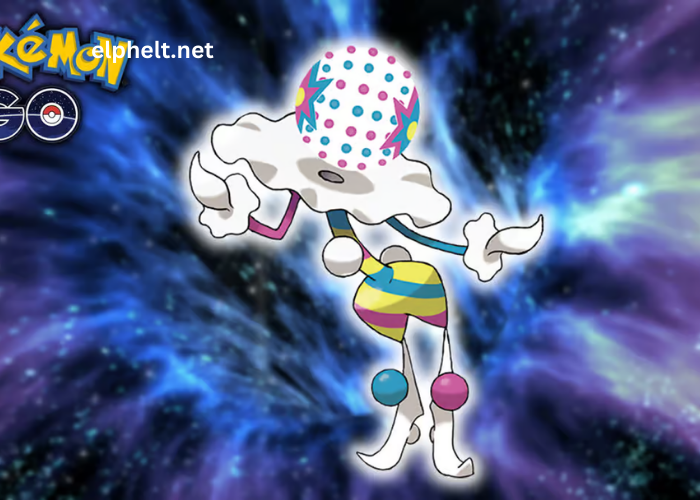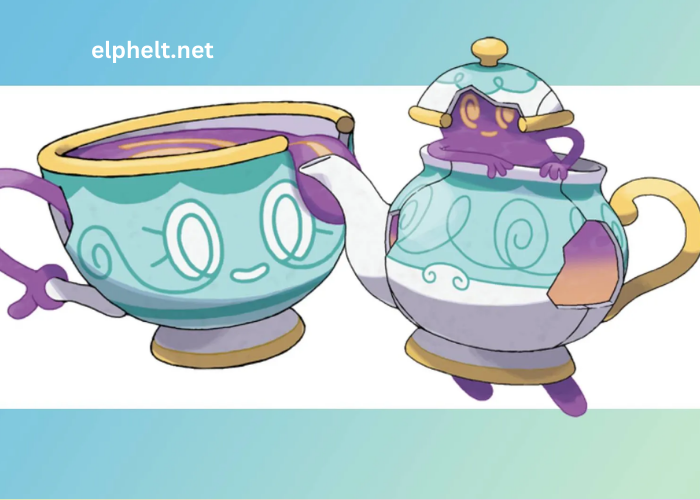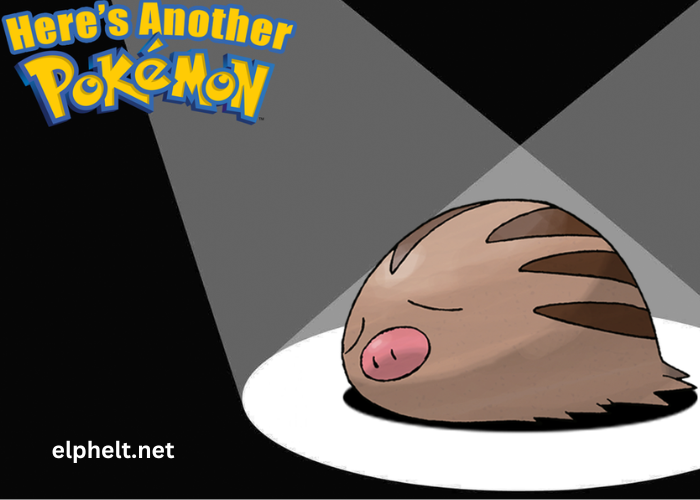Bronzor is an intriguing Pokémon that stands out due to its unique appearance and abilities. This flat, circular, blue-green creature is a dual-type Steel and Psychic Pokémon. Although it may appear unassuming at first glance, Bronzor is known for its durability and the ability to support various strategies in battle. Its shape and color give it a mystical aura, which is fitting for a Pokémon with such a deep connection to psychic and steel-based powers.
Bronzor has become a staple in many teams due to its defensive capabilities and its solid performance against certain types of Pokémon. As a Pokémon that embodies both psychic and steel attributes, Bronzor excels in offering both offensive and defensive value in different combat scenarios. Its ability to resist damage from various types and its ability to learn a variety of moves makes it an essential asset for many trainers.
Key Points:
- Bronzor is a Steel and Psychic dual-type Pokémon.
- It is known for its excellent defensive stats, making it a great tank.
- Bronzor’s ability to learn various moves helps it serve different roles in battle.
What Makes Bronzor Unique in the Pokémon World?
Bronzor’s most notable feature is its dual-type Steel and Psychic nature, which gives it a distinct advantage in battles. Steel-type Pokémon are known for their high defense, and Bronzor is no exception. With a sturdy defense stat and access to several defensive moves like Reflect and Light Screen, it can protect itself and its allies from incoming attacks. Moreover, as a Psychic-type, Bronzor can use strong moves like Confusion and Extrasensory, which are particularly effective against Fighting and Poison-type Pokémon.
What sets Bronzor apart from other Steel-type Pokémon is its low Attack stat, which limits its offensive potential. However, Bronzor more than compensates for this with its strong defensive capabilities, allowing it to excel as a supportive Pokémon in battle. For example, Bronzor can use Trick Room, a move that increases the speed of slower Pokémon, making it a useful tool for other slower members of the team.
| Move | Type | Power | Effect |
| Confusion | Psychic | 50 | Deals damage and may cause confusion |
| Extrasensory | Psychic | 80 | A powerful Psychic attack with a chance to flinch |
| Reflect | Psychic | N/A | Reduces damage from physical moves for 5 turns |
Note: Due to its sturdy defenses, Bronzor is often used as a wall to absorb damage and protect other Pokémon in a team.
How Does Bronzor Perform in Pokémon Battles?
In battles, Bronzor serves primarily as a tank—a defensive Pokémon that can absorb damage and stall for time. With its high Defense and decent Special Defense stats, Bronzor can survive several hits from many different Pokémon, making it a useful tool to set up defensive plays. Furthermore, its Steel-type makes it resistant to a variety of types, including Normal, Fairy, Flying, Rock, and Psychic-types.
Another key aspect of Bronzor’s battle performance is its support role. Light Screen and Reflect are essential moves in its repertoire, allowing Bronzor to reduce incoming damage and protect its teammates. This support role can be especially useful in long battles, where protecting your other Pokémon and controlling the battlefield is crucial. Although Bronzor’s offensive power is not its strongest feature, its ability to delay the opponent’s progress and outlast them with its durability can turn the tide of a battle.
For example, Bronzor can help a team by using Stealth Rock to cause damage to opponents as they switch in. This strategy is often used in competitive play to wear down opponents and create an advantage over time. In combination with Toxic or Will-O-Wisp, it can also stall by poisoning or burning the enemy, making them weaker with each turn.
| Stat | Value |
| HP | 57 |
| Attack | 24 |
| Defense | 86 |
| Special Attack | 24 |
| Special Defense | 86 |
| Speed | 23 |
Reminder: Bronzor’s low Speed stat can make it vulnerable to faster opponents who can take it out before it can act.
What Are Bronzor’s Strengths and Weaknesses?
Bronzor’s Steel typing grants it a strong resistance to many types, but this comes with certain vulnerabilities as well. The most notable weakness of Bronzor is its susceptibility to Fire, Ground, and Ghost-type moves. For instance, a Fire Blast from a Fire-type Pokémon can deal significant damage due to Bronzor’s Steel typing. Additionally, Ground-type Pokémon like Groudon or Excadrill can deal heavy damage through moves like Earthquake.
However, Bronzor’s Psychic typing grants it an edge against Fighting and Poison types, so it can turn the tide of battle when facing those opponents. Its ability to resist several types of moves gives it the advantage of stalling the game and forcing opponents to rethink their strategies. For example, against Psychic-types, Bronzor’s Steel typing offers a considerable advantage by reducing the damage it receives.
| Type Strength | Effect |
| Psychic | Effective against Fighting and Poison-types |
| Steel | Resistant to Fairy, Psychic, Flying, Rock, and Normal |
| Ghost | Ghost-type moves can hurt it significantly |
Note: When using Bronzor in battle, always be cautious of powerful Fire or Ground-type moves that can exploit its weaknesses.
How to Utilize Bronzor’s Potential in Your Team?
Bronzor’s role in a team will largely depend on the strategy you wish to pursue. For trainers focusing on a stalling or support strategy, Bronzor is an excellent choice. It can serve as a physical wall, absorbing damage and setting up entry hazards, status conditions, and shields for your team. With its ability to learn Stealth Rock, Toxic, and Reflect, Bronzor can make it difficult for opponents to gain an advantage.
Moreover, Bronzor pairs well with Pokémon that can take advantage of its Trick Room move, such as slow but powerful Pokémon like Torkoal or Amoonguss. By using Trick Room, trainers can boost the speed of slower Pokémon while also reducing the speed of faster opponents, allowing their team to attack first and deal damage.
An important part of Bronzor’s utility is knowing when to switch it in to take hits. It’s crucial to have a team that can cover Bronzor’s weaknesses, particularly against Fire and Ground-types. Pairing Bronzor with Pokémon that resist these types will help ensure its long-term effectiveness.
| Strategy | Best Used With |
| Defensive Tank | Pokémon that need protection (e.g., Toxapex, Rotom-Wash) |
| Trick Room Setup | Slow, powerful Pokémon (e.g., Amoonguss, Torkoal) |
| Stalling & Status Effects | Pokémon with setup moves (e.g., Toxapex, Ferrothorn) |
Reminder: Bronzor works best when it is part of a well-coordinated team strategy that supports its defensive nature.
Conclusion
Bronzor is a versatile and strategic Pokémon that excels in a defensive or supportive role. With its Steel and Psychic typing, it can withstand many attacks while providing vital support for your team. Whether it’s setting up entry hazards, using Reflect and Light Screen to protect teammates, or leveraging Trick Room to support slower Pokémon, Bronzor is a valuable asset in many different scenarios.
Though it has its weaknesses, its overall utility in battle makes it an intriguing choice for trainers looking for a reliable defensive Pokémon.
FAQ’s
- What type is Bronzor?
Bronzor is a dual-type Pokémon, combining Steel and Psychic types. - What is Bronzor’s main strength?
Bronzor’s primary strength lies in its high Defense and Special Defense stats, making it an excellent wall in battle. - Can Bronzor be used offensively?
While Bronzor is primarily defensive, it can still deal damage with moves like Extrasensory and Confusion, although it is not a major offensive powerhouse. - What are Bronzor’s weaknesses?
Bronzor is weak to Fire, Ground, and Ghost-type moves, which can exploit its Steel typing. - How should I use Bronzor in my team?
Bronzor is best used in a defensive or stalling role, supporting other Pokémon by setting up entry hazards, applying status effects, and providing defensive buffs.

